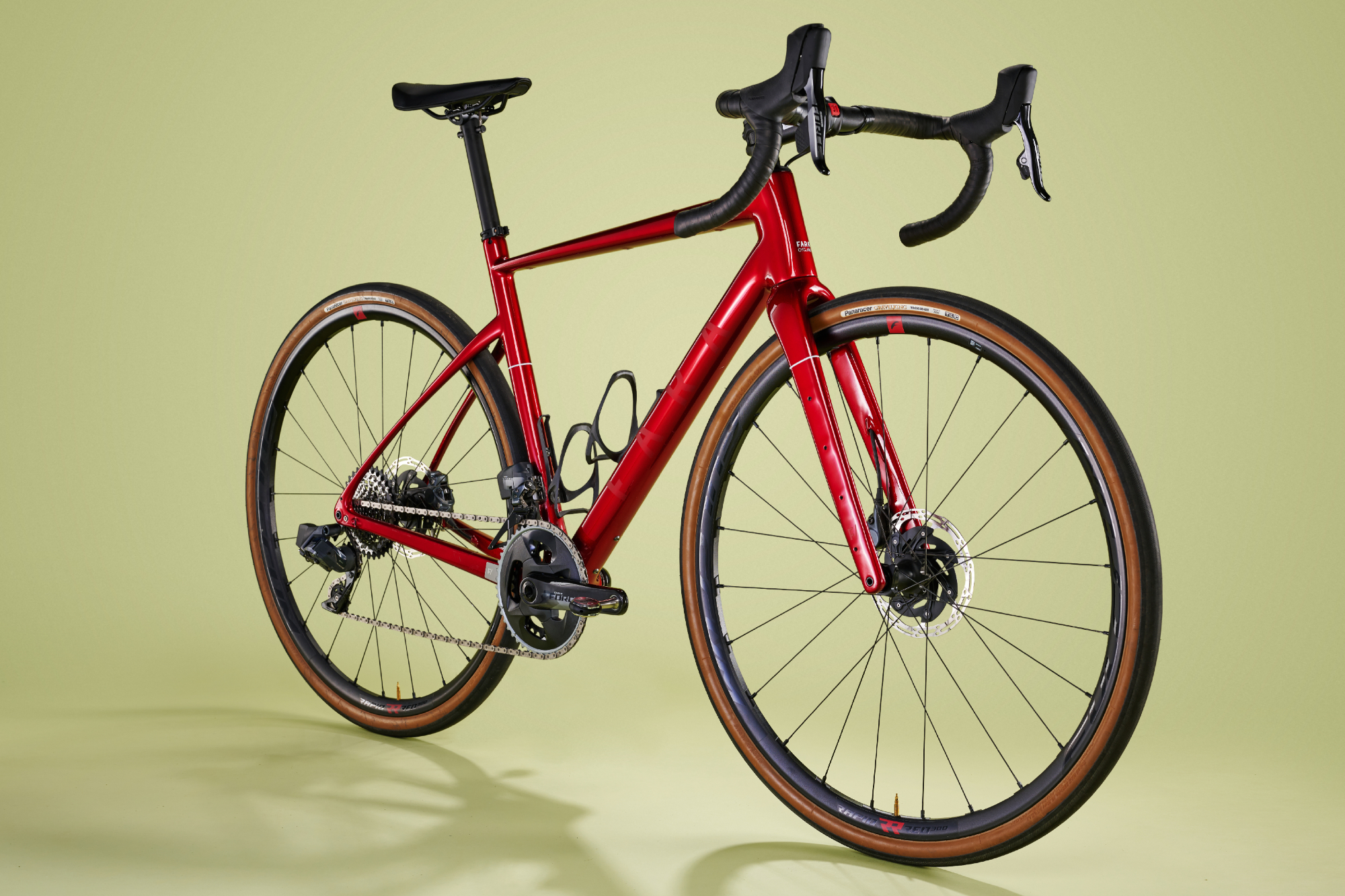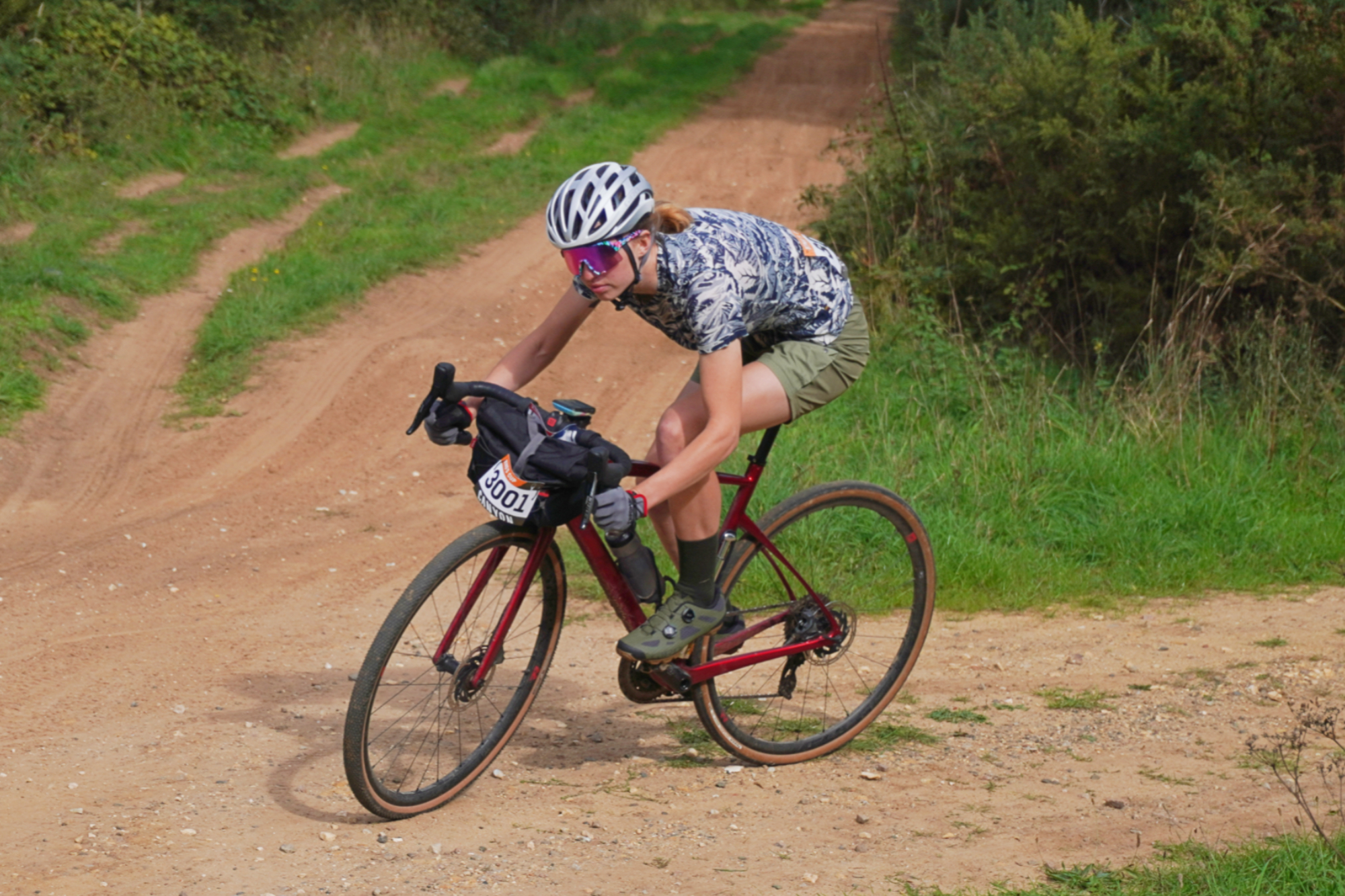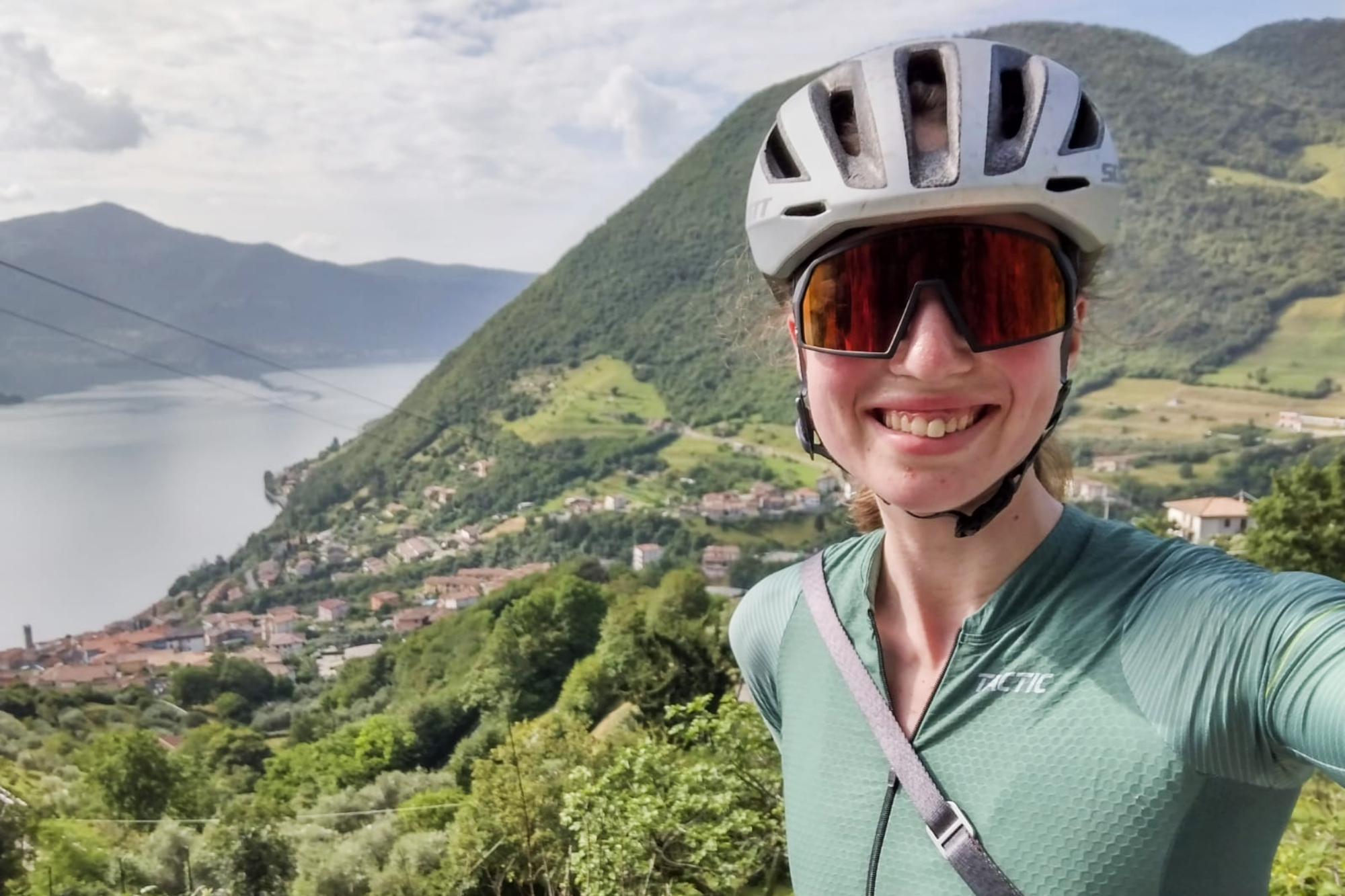Fara F/All-Road Series 2: one bike to do it all? I raced the Gravel National Champs and went bikepacking in Central Europe
An incredibly versatile bike from a boutique brand that’s competitive on price

The Fara F/All-Road is an excellent bike, able to take on long bikepacking trips and even be raced in the gravel champs. It’s lightweight, the handling is excellent and the mounting points are generous. The only criticism really to make is that the tyre clearance isn’t very generous – it should be possible to fit wider tyres whilst preserving that geometry.
-
+
Lightweight
-
+
Resilient
-
+
Plenty of mounts
-
+
Great handling
-
+
Reasonable price
-
-
A bit more tyre clearance please
You can trust Cycling Weekly.

You might not have heard of Fara before but the brand has been going for eight years now, and was founded by Jeff Webb, a Canadian ex-pro who has previously worked for Cervelo and is a long time resident of Oslo, Norway.
Naturally, there’s a heavy Nordic influence in the bikes that Fara creates – but in terms of the design language and the riding they’re designed for: winding up mountain roads and bombing along the fjords on multiday trips in the summer – and grinding through the gritty snow, slush and spray of Oslo’s roads in winter.

So, not to be outdone, I took it upon myself to throw everything I possibly could at this bike. After an initial introduction around my home roads in the Valleys of South Wales, I followed up with a two week bikepacking trip from Budapest to the mountains of Slovakia and a last minute entry into the British Gravel Championships - can the Fara F/All-Road Series 2 do it all?
Fara F/All-Road Series 2: the spec

First off, we have the lightweight carbon frame which contributes to the low (for an all-road bike) weight of 8.42kg – and there are plenty of nice touches.
From a standard 27.2mm seatpost to the hidden mounts for full-length fenders / mudguards, the fully-housed internal cable routing system is one of the more user-friendly designs, meaning that swapping out your stem or handlebars isn’t a problem and neither is disassembly when packing it into a bike box.

Much thought has been given to the carrying capacity of the bike, with extra sets of bottle bosses on the down tube and top tube, and triple mounts on either fork leg – which is handy for keeping your weight distribution even on bikepacking trips.

Being an ‘all-road’ bike, the tire clearances are much narrower than we see on most gravel bikes these days – only rated for tyres up to 38mm. Likewise, the geometry is much closer to that of a road bike, with the wheelbase coming in at under a meter in a size 53cm, whereas essentially all the best gravel bikes come in on the other side of that point.
The latest race content, interviews, features, reviews and expert buying guides, direct to your inbox!
Most of this is due to the chainstays which, at 415mm, are shorter than even some endurance road bikes these days – they’re certainly a far cry from the 435mm you see on the ‘adventure’ gravel bikes and the 425mm that’s typical for the latest ‘racier’ breeds.
By contrast, though, the headtube is relatively relaxed at 72 degrees. Of course, in the context of gravel, that’s par for the course and these days even a little on the steeper end. But for an endurance road bike this is fairly slack and has been done to balance out the handling, trying to line up a sweet spot between fast and controlled.
In terms of the build, you get SRAM Force 2x12 and an interesting mish-mash of gearing. The crankset is a 46/33t – providing a top gear larger than a 50x11 – whilst the cassette is wide 10–36t, providing a sub 1:1 combination at the low end.

The hoops I was using were a set of aluminium Fulcrum Rapid Red 300s – but this exact build is no longer available. On the closest match currently sold, you get an upgrade to the carbon Fulcrum Airbeat 400 DB. The tyres were the Panaracer Gravel Kings in a 35mm width.
Fara F/All-Road Series 2: the ride
Let’s get straight to it. I landed in Budapest at around 02:00 in the morning on a Saturday and grabbed a short night’s sleep near the airport before catching a train into the middle of town and proceeding to build up the bike just outside the central station.
I then dropped off the bike bag at a very generous bike shop (thank you again bravebike.hu!), detoured past the Hungarian Parliament building on the way out of the capital and launched straight into what turned out to be the two toughest days of the whole trip.

The start was quite innocuous, spinning along the banks of the Danube, but that easy riding belied the most brutal gravel climbs that were soon to come.

Although the hills wrapped by the river at this point weren’t anywhere near as high as the mountains I’d be riding in Slovakia, the ‘efficient’ route I’d chosen was essentially just straight up the side.
To the F/All-Road’s credit, the low gearing (extending further at both ends than Di2 Shimano GRX with a 48/31 crankset and 11-34t cassette) meant that despite the load on the bike I was still able to ride solid portions of the route and the general lightness of the bike was a plus for those times when it did come to pushing.
The culmination of that, though, was on the first day reaching the historic and magnificent Visegrád castle, which the pro peloton raced up to in the opening stage of the Giro d’Italia this year. The view was every bit as good as it looked.

And on the second day, I followed this up with yet more gravel climbing, getting to the highpoint of the Bükki national park – which, at 906m, about 100m lower than the highest point in the whole of Hungary.

Following both those ascents were some epic tarmac descents, the first fast and flowing, the second much more technical. Reflecting once I’d reached the thermal baths (and cave networks) just outside Miskolc to round out the Sunday, I have to say, the balance the F/All-Road struck was excellent.
Although a long wheelbase is certainly a plus when touring with panniers, the lighter loads of bikepacking and the more central weight distribution means you really don’t need a lumbering geometry. The F/All-Road felt lively and had a real spirit. Cutting down the descents, I felt like I was on a road bike and it was utterly fantastic.
I could write for pages about the rest of the bikepacking trip, but let’s skip forward to British Gravel Champs. With hard-packed rocky surfaces being swapped for the very sandy earth around King’s Forest, a tyre change was in order.

With the clearance being nominally 38mm, I assumed that mounting a set of slightly more aggressive 40mm tires would be a bit of a squeeze, but ultimately fine. Turns out I was wrong. The rear tire wasn’t just close to the chainstays, it was wedged in place by them. Tire clearance optimists, consider yourself warned!
Fara F/All-Road Series 2: value
At $5,699 / £5,072 for a carbon frame, wheels, and 2x12 SRAM Force, the F/All-Road Series 2 is actually really pretty good value – especially when you consider the size of the brand and the versatility of that carbon frame.
It’s hard to find bikes that present a direct comparison – most are either ‘too gravel’ or the spec includes a power meter or the mounting options aren’t quite the same. The Giant Defy Advanced Pro 1 is one of the closest in terms of spec (same groupset, carbon wheels, similar geometry and tyre clearance) but it costs more at $6,500 / £5,499.
On the other end, you can get a Ribble CGR SL built with the same groupset and carbon wheels for £4,339. So a fair chunk cheaper, although it’s worth remembering that both the Giant and the Ribble don’t have a triple mount fork.
Fara F/All-Road Series 2: specs
- Frame: Fara Cycling F/All-Road Carbon Fiber Frame, 960g,Flat Mount 160/140mm disc brake mounts, Full internal cable routing, max 700x38c slick tire clearance.
- Fork: Fara Cycling F/All-Road Carbon Fiber Disc Brake Fork, 410g
- Groupset: SRAM Force 2x12
- Handlebar: 3T SuperErgo PRO, R2 Reach 89mm, D1 Drop 131.5mm, F1 Drop flare 6.0
- Wheelset: Fulcrum Airbeat 400 DB Carbon, 700c, CenterLock, 2-Way Fit ready,
- Tyres: Panaracer GravelKing Slick TLC 700x35c
- Saddle: Fizik Tempo Argo R3
- Seatpost: Fara Cycling Carbon Fiber 27.2mm Round Seatpost, zero offset, 400mm length Weight: 8.42kg
If you're interesting in the full write up of our bikepacking loop around Hungary and Slovakia and through the Capitanian mountains, you can head straight over here. For a breakdown of our chosen kit, what worked well and what didn't quite, you can find that over here. Finally, if you've never thought about using flat pedals for bikepacking – why haven't you? We pick apart the what the best pedal choice for bikepacking really is in our editorial over here.

I’ve been hooked on bikes ever since the age of 12 and my first lap of the Hillingdon Cycle Circuit in the bright yellow kit of the Hillingdon Slipstreamers. For a time, my cycling life centred around racing road and track.
But that’s since broadened to include multiday two-wheeled, one-sleeping-bag adventures over whatever terrain I happen to meet - with a two-week bikepacking trip from Budapest into the mountains of Slovakia being just the latest.
I still enjoy lining up on a start line, though, racing the British Gravel Championships and finding myself on the podium at the enduro-style gravel event, Gritfest in 2022.
Height: 177cm
Weight: 60–63kg